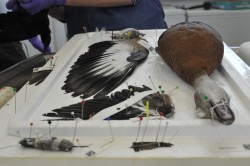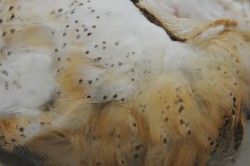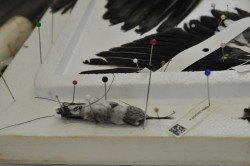Taxidermy for Paleontologists
February 14, 2017
By Monica Kortsha
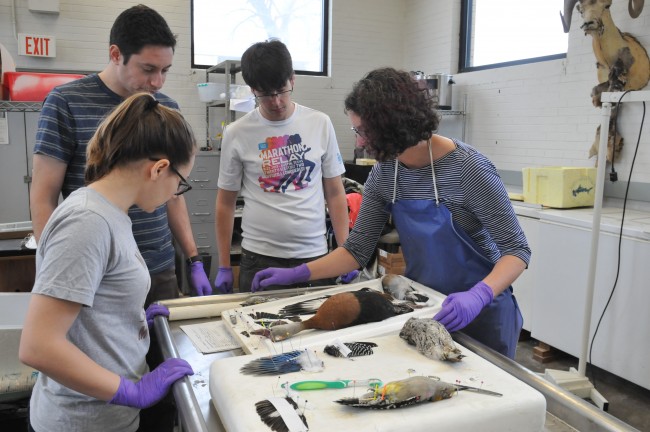
The life of a paleontologist doesn’t always mean working with rock-encased fossils.
Sometimes specimens can be downright fluffy.
Last week Becky Desjardins, a preparator at the Naturalis Biodiversity Center in the Netherlands, taught Jackson School paleontology students how to preserve modern birds using specimens housed in the collections at the Jackson School Museum of Earth History (formerly known as the Vertebrate Paleontology Lab). She’ll be holding another student session on Feb.24.
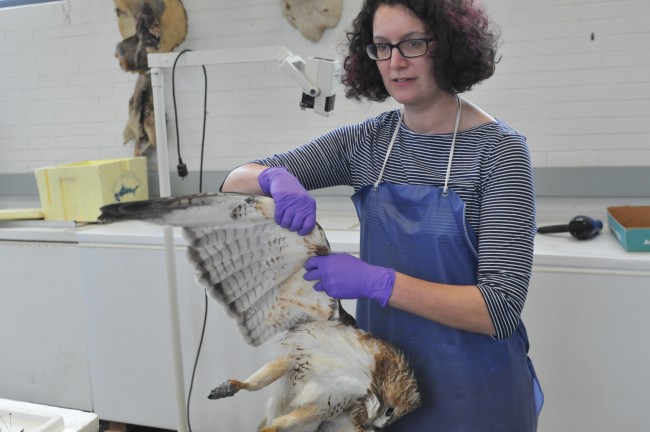
Reduced to flesh and feathers, the first specimen—a tiny screech owl the size of a softball—looked more like a feather duster than a bird of prey.
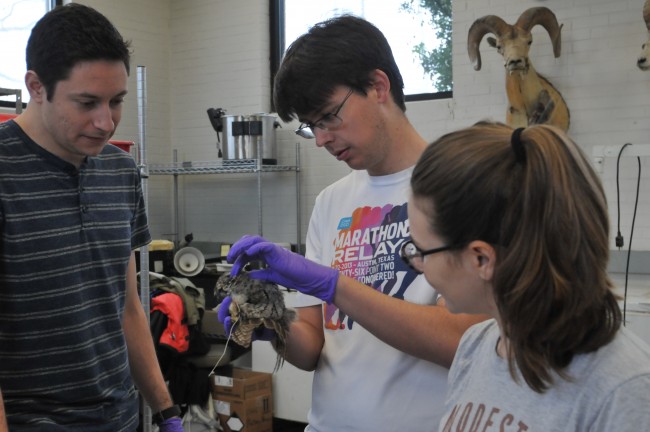
But in short order the owl was stuffed back into a shape. A cotton “brain” on the end of a kabob stick, and few handfuls of kapok fluff—a soft downy fiber once used to stuff teddy bears—is all it takes.
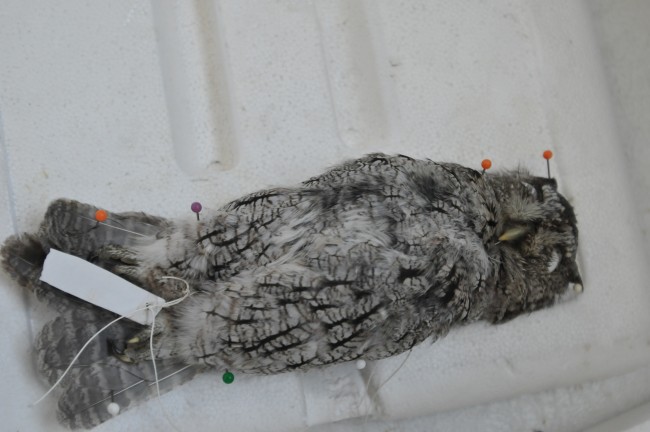
Birds are the direct relatives of extinct dinosaurs, said Chris Torres, a Ph.D. student advised by Jackson School Professor Julia Clarke. By studying birds that live today as well as fossils, researchers can understand more about dinosaurs and the evolution that led to the immense diversity of bird species we see today. Studying a variety of specimens can also add insight into the evolution of birds’ unique abilities, from birdsong to flight.
“There are things you can study in living birds that you can’t study in extinct dinosaurs,” Torres said, mentioning that birds are a kind of living dinosaur. “The questions you can answer with things that are alive offer direct comparisons between the living and dead.”
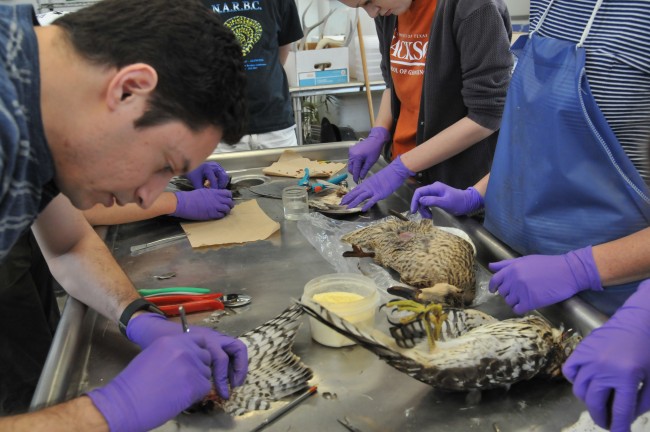
Three other students attended the training. Sarah Davis, a Ph.D. student advised by Clarke, studies the factors that influence color in bird feathers. James Proffitt, another Ph.D. student advised by Clarke, studies the evolution of bird locomotion. Eva Hoffman, a master’s student advised by Professor Timothy Rowe, is conducting research on the origin of mammals.
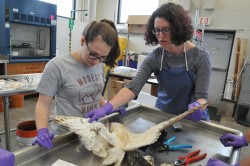
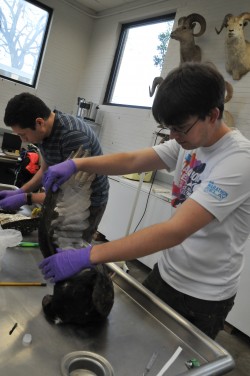
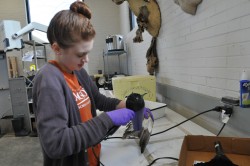
The class focused on preserving wings from a sample of local birds, including a barn owl, a Cooper’s hawk, a turkey vulture, and a dove. The effort is spearheaded by Clarke, who is interested in growing the lab’s wing collection to aid her own research on wing evolution.
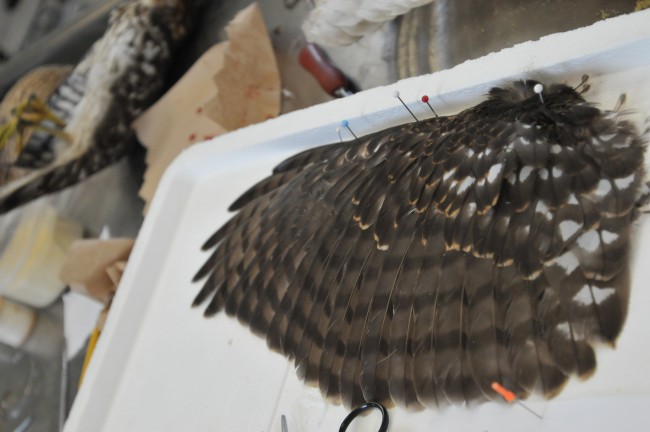
The birds died while in a rehabilitation center, one of the many locales where lab manager Kenneth Bader retrieves specimens. A grackle that Desjardins demonstrated wing preservation techniques on was collected by Bader from a nearby gas station. While a bucket of dried penguin wings came from animals donated by SeaWorld.
In total, the lab has 13,000 animal specimens and counting.
“The general idea is we don’t want one of something,” Bader said. “Just look at the diversity in people. It’s the same with animals, so we need to build up a large number of specimens.”
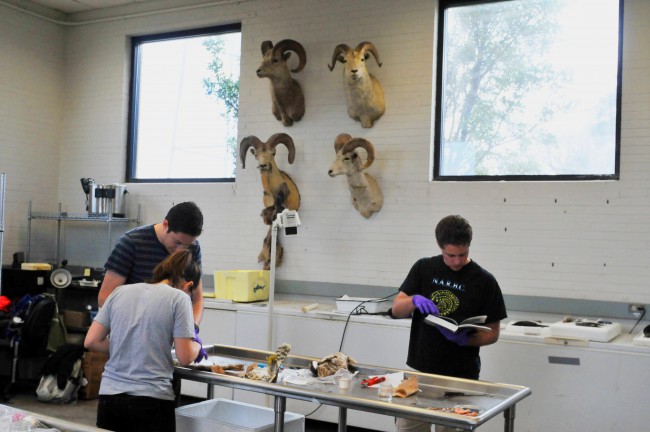
The first step of wing preservation involves cutting the wing from the body, and removing muscle from delicate wing bones using tweezers. From time to time, cornmeal is rubbed into the cavity to absorb blood and fluids. The incision is then sewn up with cotton thread.
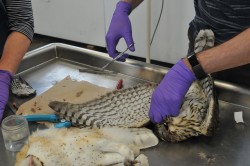
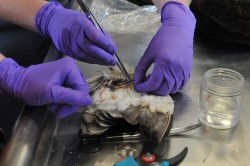
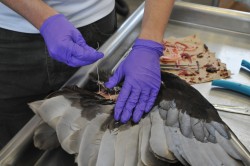
Finally, the wing is placed on a Styrofoam board to stiffen. Pins placed around the wing’s perimeter help keep feathers in the desired place.
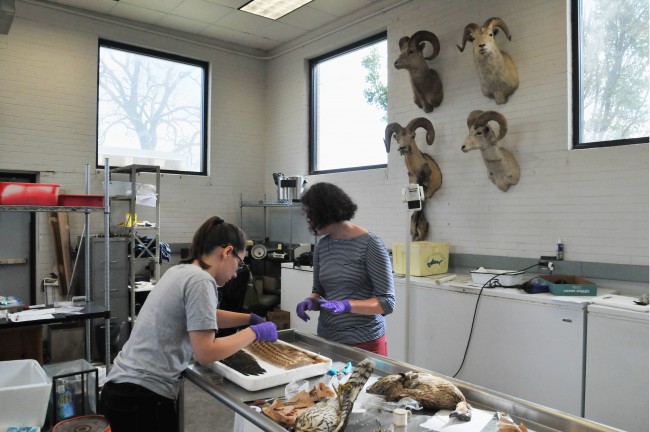
The fate of the rest of the body is skeletonization. The lab’s supply of flesh-eating dermestid beetles, are more than happy to help with that process.
While students in this session are preserving only the wings, Desjardins is setting aside a collection of Texas birds to preserve in their entirety. These include a tiny hummingbird, a grackle and woodpecker.
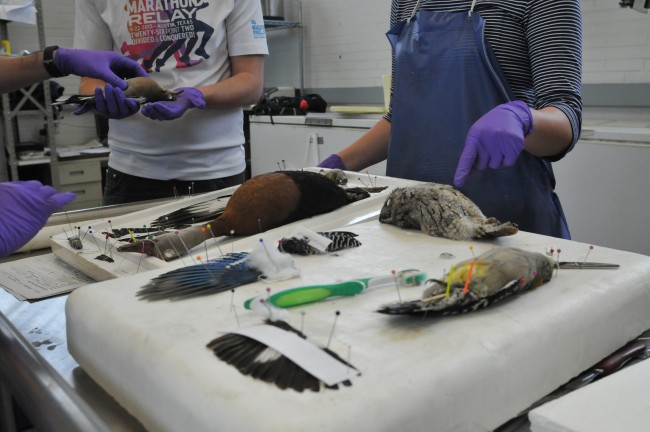
When she returns to the Netherlands, she’s bringing these birds with her so they can be added to the collection at the Naturalis Biodiversity Center. The historic collection has over 42 million specimens of animals, plants and minerals from around the world. But these local specimens will be the first of their kind held at the center.
